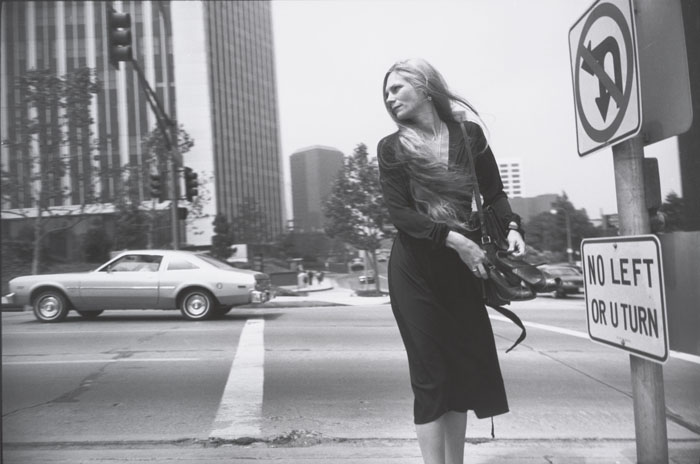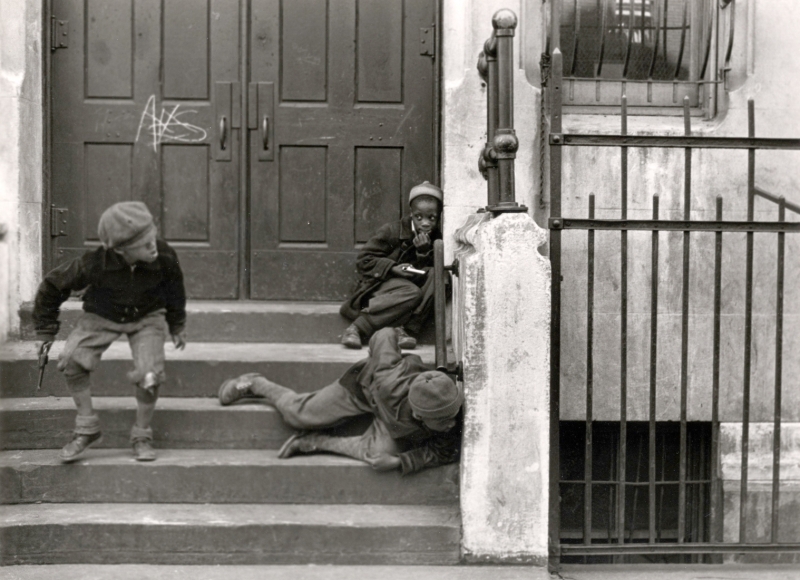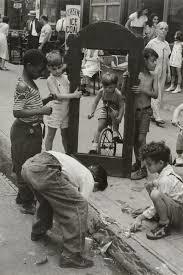
Street photography, also known as candid photography, captures unstaged incidents often in public places. Street photography can focus on people and their behaviour in public, or used to record people’s history. However, people being featured in the image is not a necessity within street photography. For example some photographers often produce photos without people included in the frame, but their presence is suggested by the subject matter.

Helen Levitt

Helen Levitt, born in Brooklyn, NYC, in 1913, was known as “the most celebrated and least known photographer of her time”. Whilst teaching art classes to children in the 1930’s, Levitt became fascinated by chalk drawings that were part of the New York children’s street culture at the time. This led her to buying her first camera to capture the drawings and the children who made them. This resulted in her publishing these images in 1987, naming them “In The Street: chalk drawings and messages, New York City” (1938-1947). Levitt continued to take photos throughout the 30’s and 40’s, with her work first being published in the Fortune magazine’s 1939 issue. Helen Levitt received her first grant in 1946 from the Museum of Modern Art in 1946, and received two grants in 1959 and 1960 from the Guggenheim Foundation fro her colour photography work. She then published her first major collection, “A Way of Seeing”, in 1965 and became a Photography Fellow of the National Endowment for the Arts.
Analysis of Helen Levitt’s work

Helen Levitt started her career by taking photographs of the inhabitants of poorer neighbourhoods in New York, such as the Bronx and Harlem. Here she photographs children in the streets of their neighbourhood.
The lighting used in this image is very low and dull. This suggests natural lighting was used as there is little representation of shadows or highlights. The use of natural lighting adds a sense of rawness to the image, as she captures the scene in its pure form, almost without purpose but simply to capture the moment.
There is little example of line within the photograph, however it could be argued that the placement of the pavement can be seen as a leading line to direct the viewers eyes to the focal point of the children, and the frame.
There is no form of repetition in the photograph as the composition is not purposely set up. There is also no use of echo or reflection in the photograph for the same reason.
The only use of shape in this photograph is the geometric square shape in the centre of the frame that the children are holding in the centre third of the image. Otherwise, the shapes in the photo are all organic and don’t have any relation to each other.
There is a wide depth of field within this photograph as both the background and foreground are in focus, this provides a strong sense of depth as the environment further displays the culture and meaning behind the focal point of the children.
There is little sense of texture in this photograph, however some may say the leading line of the edge of the pavement has a more uneven and rough surface, giving the overall image a harsher texture. However this is contrasted with the smoother surface of the pavement, on which the children stand.
There is a limited range of tones in this photograph as the image has a monochrome filter. The lightest parts of the photograph are the lighter-tones clothing of the people, which is juxtaposed with the harsh, black frame in the centre of the image. The dark frame takes up the majority of the photo, causing the image to tend towards the darker tones.
There is a lack of colour in this photograph, which is a common factor for Helen Levitt’s earlier work. This is most likely because colour photography was only made accessible in the 1930’s, therefore the majority of Levitt’s work was black and white until her later work in the late 1960’s. The lack of colour accentuates the strong contrast between light and dark.
The composition of the image is unbalanced and unorganised. This is because Levitt’s main focus in this shoot was to capture the joy and interest of the children in the poorer neighbourhood’s of New York, therefore the image is not set up and captured in the spur of the moment. Although there is a lack of thirds in this photograph, the focal point (that being the black frame) is coincidentally placed in the centre of the image.
